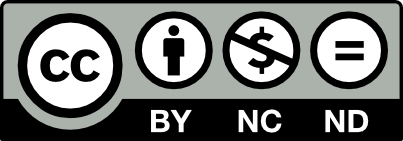This page is licensed under Creative Commons under Attribution 4.0 International. Anyone can share content from this page, with attribution and link to College MatchPoint requested.
What “Fit to Major” Really Means at UT Austin
When students apply to UT Austin, many focus on getting into the university. But UT admissions doesn’t work that way. You're not applying to UT Austin. You’re applying to your first-choice major at UT Austin—and that changes everything.
Whether it’s Business at McCombs, Engineering at Cockrell, or a major like Biology, Journalism, or Public Health, what UT wants to know is simple but powerful:
Have you shown that you're ready to succeed in this specific major—starting on day one?
That’s the heart of what UT calls “fit to major.” And it might just be the most important—and misunderstood—part of the application.
Let’s unpack what it really means, why it matters more than ever, and how students can take intentional steps to build their story of fit.

What Is “Fit to Major”—And Why Does UT Care So Much?
UT Austin receives more than 90,000 applications a year. With so many talented students applying, the admissions team needs a way to identify which students are most likely to succeed—not just in college, but in their first-choice major.
That’s where fit to major comes in.
Here’s what UT is really looking for:
- Do your academics show you're prepared for this major’s coursework?
- Have you explored this major in your activities and experiences?
- Do your essays and expanded resume clearly tell the story of why this major is the right fit for you?
- Are you someone who will thrive—and contribute—in this academic community?
It’s not about being perfect. It’s about being authentic, intentional, and prepared.
Academics + Test Scores: The First Clue to Fit
At UT, your transcript and test scores don’t just show whether you’re smart. They show whether you're ready for the academic demands of your major.
For example:
- Business (McCombs): UT wants to see calculus (AP Calc AB or BC preferred), plus strong math subscores on the SAT/ACT.
- Engineering (Cockrell): Success in AP Physics and AP Calc BC, with high math and science section scores.
- Biology, Public Health, or Nursing: A strong foundation in biology and chemistry, plus a science-focused score profile.
Unlike many schools, UT looks beyond just your total SAT or ACT score. They pay close attention to section scores that reflect your major-specific strengths.
✅ Action Step: Make sure your course selections and testing strategy reflect the academic preparation needed for your major. If you’re unsure, talk to your school counselor—or reach out to our team.
Activities That Show You Belong in the Major
UT looks for students who haven’t just picked a major—they’ve explored it. They’ve taken initiative, built experience, and shown curiosity over time.
Strong applicants typically have 3–4 activities that connect clearly to their chosen major. These can include:
- Clubs and Competitions (e.g. DECA, robotics, science fairs)
- Courses and Certifications (e.g. business incubators, SolidWorks)
- Internships or Job Shadows
- Self-Started Projects
- Summer Programs or Research
- Work or Volunteering in Related Fields
You don’t need every box checked. What matters is that you show depth, not just participation.
Case Study 1: From Lifeguard to Public Health
This student started as a summer lifeguard. Over time, she began teaching swim lessons and noticed the lack of water safety education in her community. She joined a drowning prevention nonprofit, ran a fundraiser through her school orchestra, and completed a clinicals course at school. She also pivoted from her original plan to major in Biology—choosing instead the new Public Health major at UT.
📘
Academics: AP Biology, Dual Credit Anatomy & Physiology
📊
Test Scores: SAT 1390, strong science subscores
🏆
Activities: Lifeguarding, swim lessons, nonprofit fundraiser, clinical shadowing
✅
Result: Admitted to Public Health at UT
Case Study 2: Building a Business Story
This student thought he wanted to be pre-med, but after exploring different fields, he fell in love with finance. He joined his school’s business incubator, launched a drone photography business, and worked at a coffee shop—where he eventually shadowed a regional manager and sat in on budget planning meetings. His resume and essay told the story of real-world experience, problem-solving, and initiative.
📘
Academics: AP Calculus AB, Honors Economics
📊
Test Scores: SAT 1380 (Math 720)
🏆
Activities: Business incubator, drone venture, job + shadowing
✅
Result: Admitted to McCombs School of Business
Case Study 3: Engineering from the Ground Up
This student showed a clear, consistent passion for engineering. He took advanced math and science courses, joined the school’s engineering pathway, completed SolidWorks certification, and built a portfolio of design projects. He interned at a local engineering firm two summers in a row—eventually contributing to real work.
📘
Academics: AP Calc BC, AP Physics C, Multivariable Calculus
📊
Test Scores: ACT 34 (Math 35, Science 34)
🏆
Activities: Robotics, SolidWorks, internship, Eagle Scout STEM project
✅
Result: Admitted to Cockrell School of Engineering
Essays + Resume: Where the Story Comes Together
The expanded resume and the short answer essay about your major are where you get to pull it all together. These are two of the most important pieces in the UT Austin application—and two of the most underused.
Your essay should tell a clear story of:
- What sparked your interest in this major
- How you’ve explored and deepened that interest
- What you hope to do at UT in this major
Your resume should support that story with clear, detailed entries that include time spent, responsibilities, and—most importantly—initiative and impact.
✅ Action Step: Start your resume and essays early. Think of them as a courtroom argument: you’re presenting evidence of why you belong in this major.
Final Thought: Fit to Major Is the Filter
UT Austin isn’t looking for perfect students. They’re looking for students who know themselves, have taken initiative, and are ready to thrive in their chosen field.
That’s what fit to major really means.
And when you build your application with this in mind, you don’t just give yourself a better chance—you give UT a clearer picture of why you’ll succeed.


